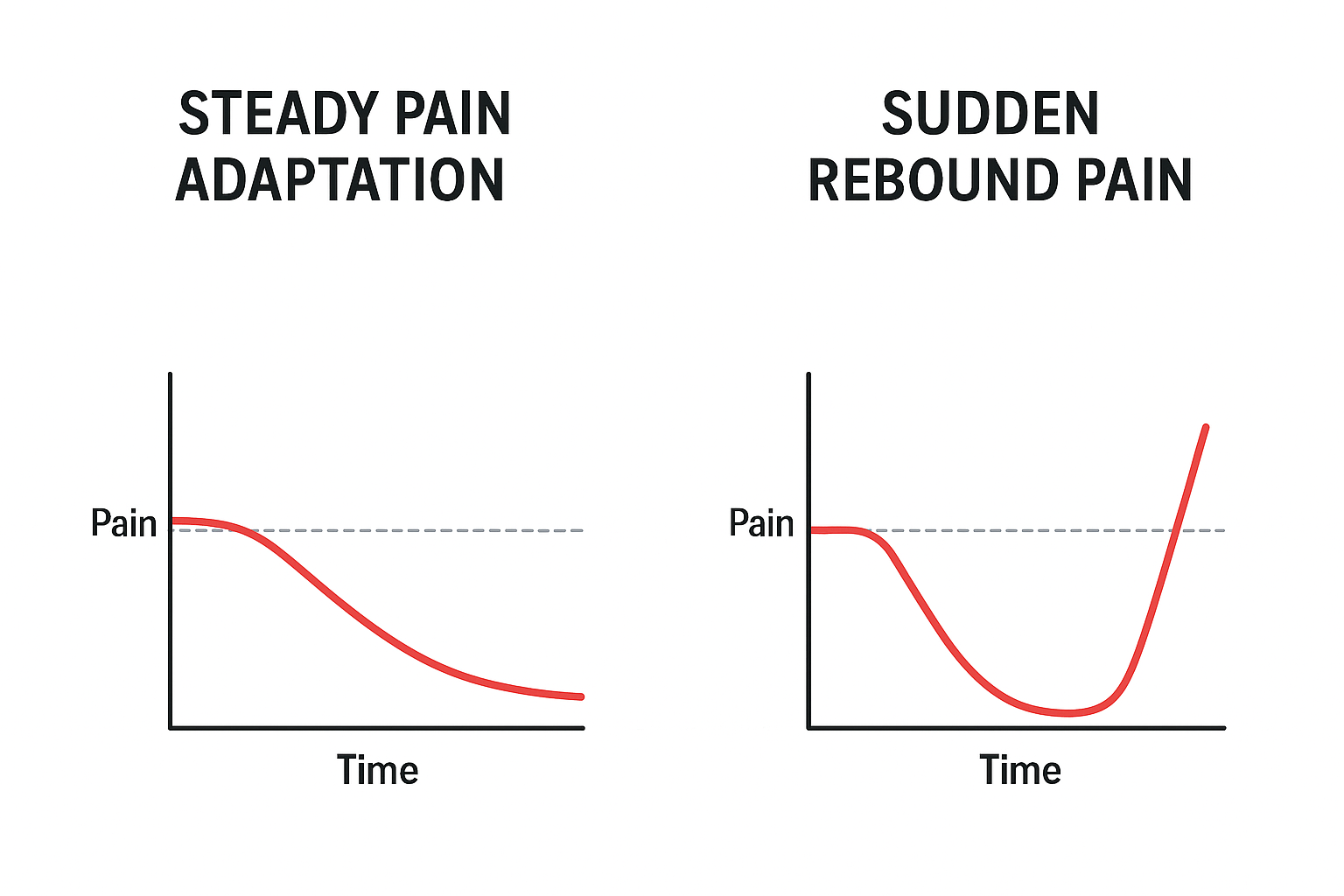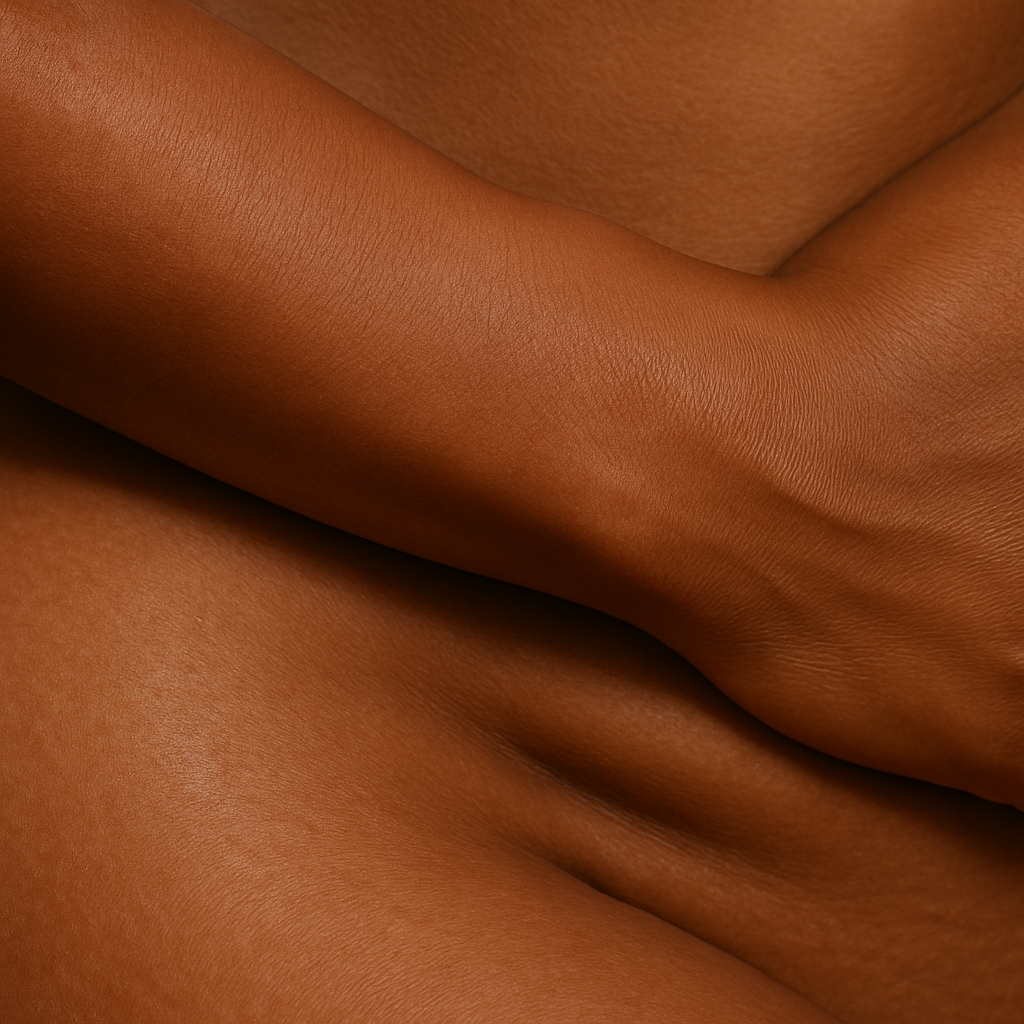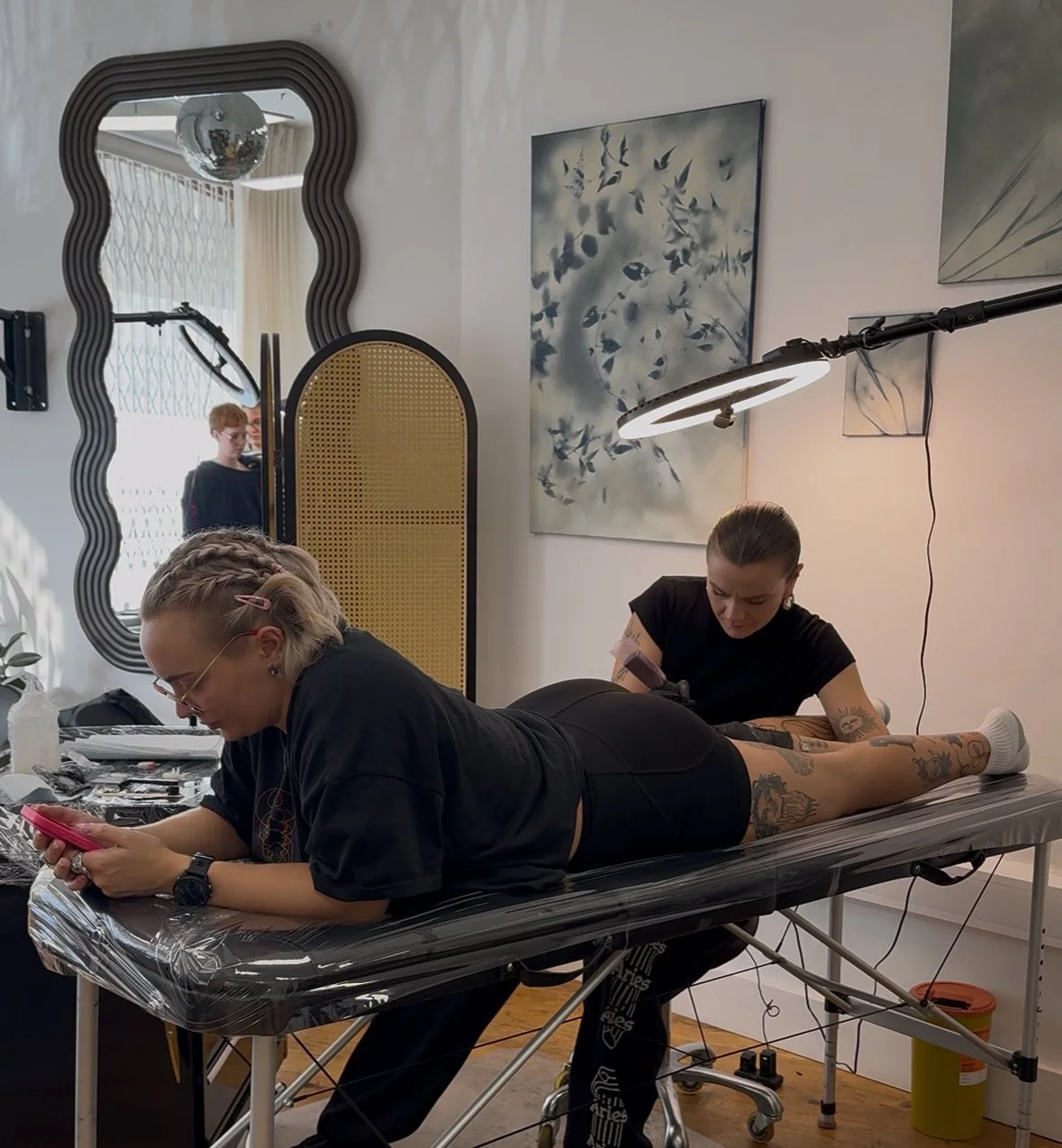SHOULD I BE USING NUMBING CREAM?
HOW IT WORKS AND WHY SOME ARTISTS MAY NOT RECOMMEND...
If you’re nervous about tattoo pain, you might be considering numbing cream. It’s one of the most common questions I get, especially from people preparing for their first tattoo or choosing a sensitive placement. This guide breaks down exactly how numbing creams work, why they don’t always help, and how they can affect the tattooing and healing process. Call me Bill Nye, we’re about to get scientific up in here!
How Numbing Creams Work (Scientifically Explained)
What’s inside numbing cream? Most tattoo numbing creams use topical anaesthetics such as lidocaine, benzocaine, or tetracaine. These work by temporarily blocking voltage-gated sodium channels in your nerve endings — meaning your nerves can’t send pain signals to your brain for a short period.
How deeply do they numb? Tattoo needles reach the dermis, while topical anaesthetics only reliably numb the epidermis and the upper dermis. This is why numbing creams take the edge off, but rarely numb everything.
How long do they last? Between 20–90 minutes, depending on strength, skin type, and body temperature.
Why Numbing Cream Can Make a Tattoo Feel More Painful Later
When the cream wears off, the sodium channels in the nerves reopen suddenly. Because your body hasn’t gradually adapted to the tattoo sensation, this “switching back on” can feel:
sharper
hotter
more uncomfortable
This is known as rebound pain or pain sensitisation, and it’s one of the biggest reasons clients struggle halfway through sessions when they’ve used numbing cream.
How Numbing Cream Affects the Skin During Tattooing
Numbing creams can change the skin in ways that affect how smoothly a tattoo goes.
1. Vasoconstriction
Some ingredients tighten blood vessels, which can change how pigment settles.
2. Texture changes
Skin may become:
slippery
swollen
overly soft or ‘waterlogged’
slightly spongy
This makes needle depth less predictable — especially for illustrative and fine line styles.
3. Barrier disruption
Some formulas weaken the stratum corneum (top skin layer), leading to more redness or irritation during tattooing.
How Numbing Cream Can Affect Healing & Macrophages
This is rarely discussed, but incredibly important.
Macrophages: The Tattoo Healing Powerhouses
When you get a tattoo, your immune system sends macrophages to the area to:
clear damaged tissue
fight bacteria
engulf pigment particles, helping the tattoo settle
This is a controlled and essential part of healing.
How Numbing Creams Can Interfere
If the skin is:
chemically irritated
pre-swollen
vasoconstricted
barrier-compromised
…your immune system can interpret the area as more “injured” than it actually is.
Macrophage Overactivity
The body sends more macrophages than necessary — and they can become overzealous. This can lead to:
inconsistent ink retention
over-cleaning of pigment
lighter spots
small dropouts in lines
This is why some tattoos done on numbed skin heal slightly patchier, even when the tattooing itself was solid.
My Professional Recommendation
You can use numbing cream if it makes you feel safer — there’s no judgment.
But based on experience, I generally recommend avoiding it because:
rebound pain is often worse than normal tattoo pain
the skin behaves less predictably for clean lines
healing can be more variable
macrophage overactivity may increase patchiness
Better Ways to Manage Tattoo Pain
You’ll get a smoother experience by:
eating a proper meal beforehand
staying hydrated
bringing music, a podcast, or something to focus on
dressing comfortably
taking breaks whenever you need — they’re always welcome
Everyone’s pain threshold is different, and that’s completely normal.
Conclusion: Are Numbing Creams Worth It?
Numbing creams do work — but only temporarily. The science behind how they wear off, how they affect the skin, and how they influence healing explains why they often don’t deliver the pain-free session people expect.
If you decide to use one, that’s completely fine — we can plan around it. But most clients find the session smoother and more predictable without.
Further Reading
Ready to Start Your Tattoo?
If you’d like to discuss an idea, ask a question, or book a session with me, you can head to my Enquiry Page.





